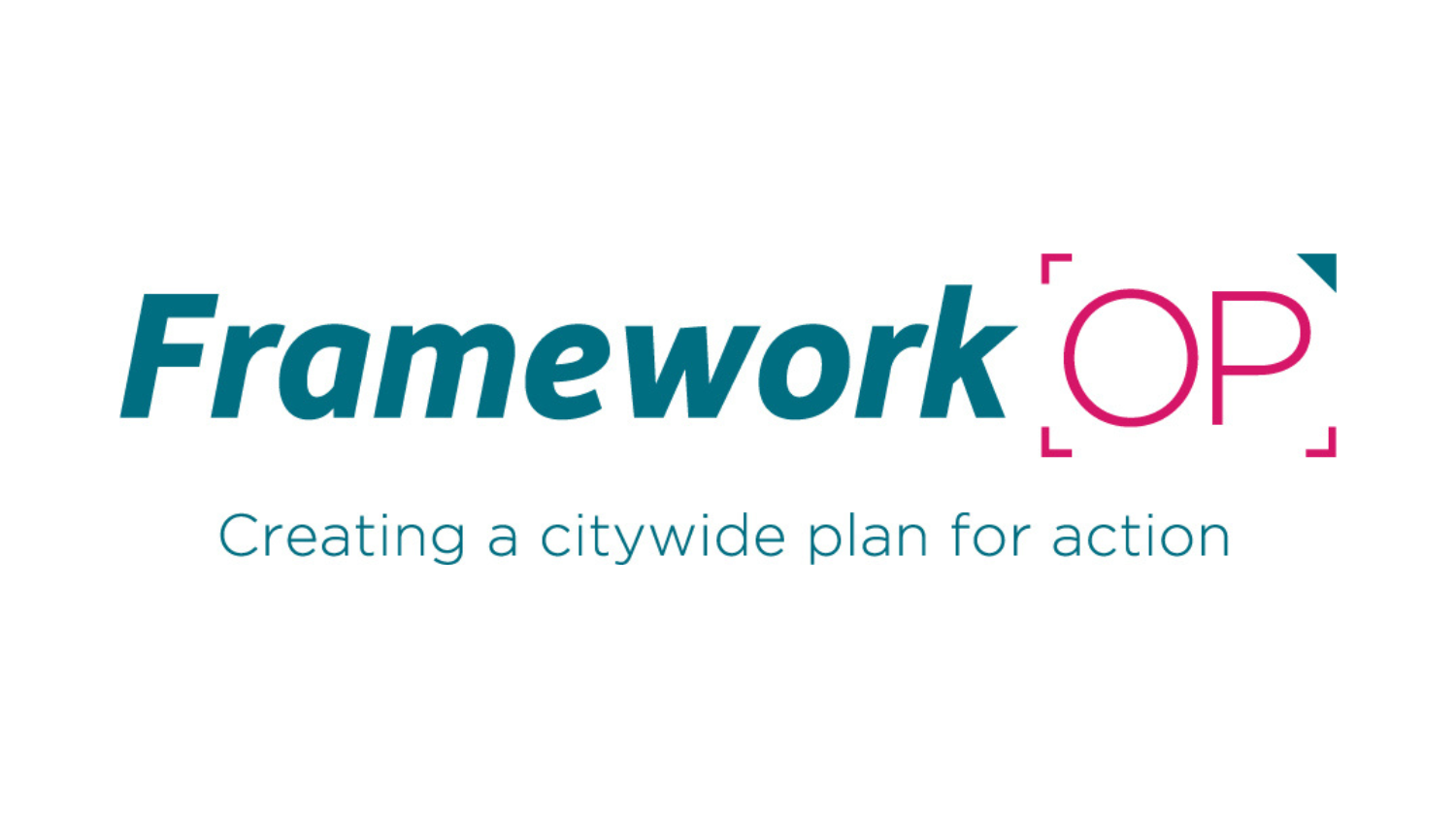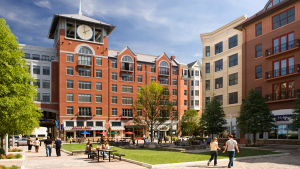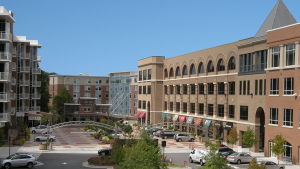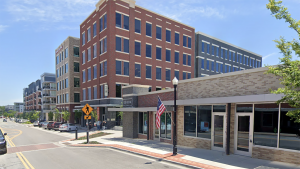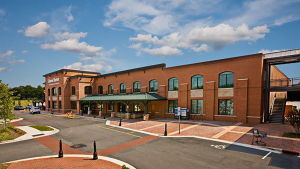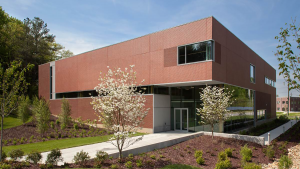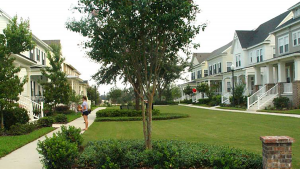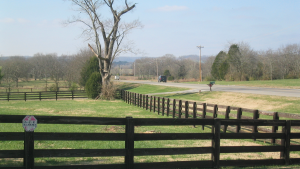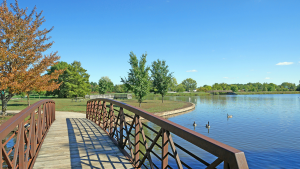Comprehensive Plan: FrameworkOP
The comprehensive plan is a policy guide outlining the City’s intention for growth. The plan guides decision-makers and the community regarding future development and aspects of our city’s quality of life, focusing on housing, development, mobility options and the environment.
In 2022, the City of Overland Park launched FrameworkOP to update its comprehensive plan. This community-driven process provided a detailed update of the City’s previous comprehensive plan to respond to current needs, shape future opportunities, integrate best practices and build upon the City’s strategic plan, Forward OP.
FrameworkOP reflects the community’s intention for where and how Overland Park should grow through 2045.
Contact
Planner of the Day
pod@opkansas.org
913-895-6217

Comprehensive Plan Resources
- FrameworkOP Foundation Report
- FrameworkOP Land Use Alternatives Technical Report
- FrameworkOP Public Engagement Summary
FrameworkOP Advisory Teams Summaries
Planning for Overland Park’s Future
Learn how Overland Park’s Comprehensive Plan shapes the City’s future!
Featured at the Mayor’s State of the City address, this video explores how the plan guides growth and development, ensuring a vibrant and sustainable community. Hear from those who played a key role in shaping the plan, sharing insights on the collaborative process and its impact.
Comprehensive Plan Use
This comprehensive plan is a policy guide that the City of Overland Park staff uses to evaluate development proposals, annexation requests and capital investment projects.
The Planning Commission and City Council also use FrameworkOP when making the City’s planning decisions. The goals, development principles and policies included within this plan will be assessed and referenced in staff reports.
Elected and appointed officials will use this policy guidance to assess whether projects support the goals and policies of this comprehensive plan and assess any related trade-offs when making important development and policy decisions.
The comprehensive plan also can be used by:
- Potential homeowners, residents, homeowners associations and neighborhood organizations to identify proposed land uses and planned roadways in their area or throughout the city.
- Developers to identify the types of developments the City would like to see.
- Other agencies, including school districts, county government and utility companies to help forecast future service needs.
- Surrounding cities to evaluate the appropriateness and compatibility of their plans for proposed land uses and roadways.
Future Development Character Framework
The Future Development Character Framework considers land uses as part of a larger framework of places in communities with similar block patterns, building forms, street networks, and land uses. The character types approach focuses on design, allows for flexibility of uses, fosters mixed-use development and helps coordinate the design of development and transportation facilities.
The Future Development Character Framework is a statement of aspirations for the community’s future, describing the general form and land uses for distinct areas of Overland Park using character types applied on a map. Each character type includes a set of “building blocks” which serve as a general rule for the desired scale and character of development. It is also reviewed as part of development and rezoning processes. If a proposal is consistent with the Future Development Character Framework, that is evidence that the proposal is aligned with the vision of the city’s future.
The Planning Commission and Governing Body use the Future Development Character Framework map, character type descriptions, building blocks and policies and actions outlined in FrameworkOP to make decisions about proposed development in Overland Park.
Zoning
The Future Development Character Framework is intended to define the appropriate and desired development patterns throughout the city. These recommendations are primarily implemented through the City’s Unified Development Ordinance, which is the legal tool regulating the use of land, including the types of structures that may be built, how they are built, where they can be located on a property and how they may be used. There may be more than one appropriate zoning category for a specific character type.
While the individual character types may include recommendations for building height, massing, connectivity, transitions and other design features, the zoning ordinance defines these requirements.
The Future Development Character Framework and zoning map have different, yet complementary, roles in guiding and regulating land development in Overland Park. The two should be used jointly to review the merits of a proposed development to ensure it meets land use regulations and complies with the City’s goals and policies.
Greenway Linkages Guidelines
The greenway linkages guidelines guide the development of an extensive system of linear open spaces, most of which will have bike and hike trails linking public parks and recreation facilities with schools, residences, churches, libraries and more.
These linkages are often used as buffers between differing types of land uses as a means to conserve areas of natural or historic value or as an enhancement to parks and roadways.
The greenway linkages guidelines describe the five types of greenway linkages shown on the map.
The City Council and Planning Commission use the plan and guidelines in their review of all site development proposals, including platting of land, rezoning and special use permits.
Changing the Comprehensive Plan
The City reviews portions of the comprehensive plan annually to ensure the plan reflects current land use policy. This review is also a requirement of state planning enabling legislation.
Over time, conditions in the community will change and it may be necessary to consider alternative character type applications for certain areas. This is appropriate for sites that have experienced the following changes:
- New or enhanced transit service provided nearby;
- Land use changes or increases in development intensity on adjacent sites that share a property boundary;
- New public investments or changes in transportation or utility infrastructure, parks, schools, religious facilities, or other public facilities;
- Changes in market demand; or
- Changes that align with the City’s Development Principles.
The Planning Commission’s Comprehensive Plan Committee works with staff to update the plan. This review may involve workshops to outline proposed amendments. Amendments may come from the Governing Body, Planning Commission, City staff, or residents.
After drafting amendments, the Planning Commission will hold a public hearing before adopting any amendments to the comprehensive plan.
Character Types
The Future Development Character Framework map and the following character types comprise the Future Development Character Framework. The character types include a broad list of uses along with associated definitions referenced within each character type.
These character types provide a common language and clear direction that can be used by residents, property owners, developers, City staff and elected officials when determining the appropriateness of a development application or a requested rezoning.
- Regional Activity District
- Local Activity District
- Downtown District
- Commercial Hub
- Innovation/Flex Hub
- Compact Neighborhood
- Traditional Neighborhoods
- Suburban Neighborhood
- Rural Transition Zone
- Public Parks and Open Space

